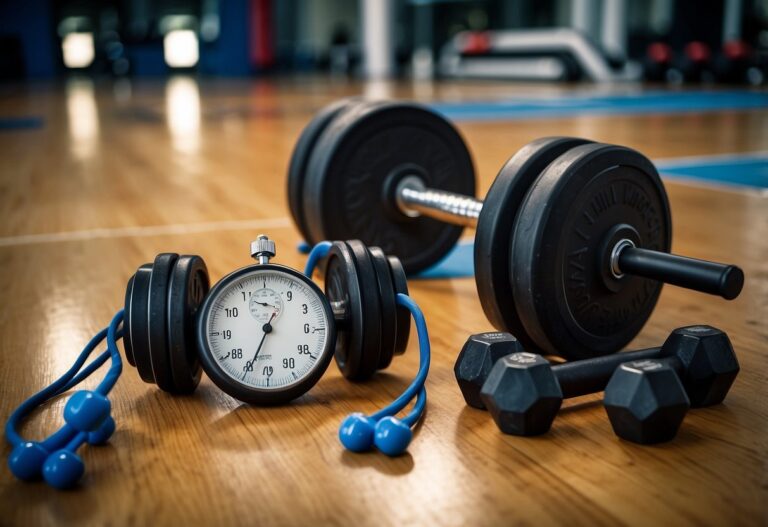Starting a workout routine can be daunting, especially if you are naturally lean and find it hard to gain weight. You might have tried different diets and exercises but still see little progress. The right tips and guidance can help you maximise your efforts and achieve your fitness goals.

It’s important to know what works best for your body type and how to effectively combine exercise and nutrition. By following expert advice, you can transform your physique and build muscle more efficiently.
Focus on Compound Exercises
To build muscle effectively, it’s important to focus on compound exercises. These work multiple muscle groups at once, giving you more bang for your buck. Exercises like deadlifts and squats are excellent choices. They engage your legs, back, and core, helping you grow stronger overall.
Pull-ups and bench presses also fall into this category. They target your upper body muscles, including your back, shoulders, and chest. Including these in your routine will help you build a balanced, muscular physique.
For the best results, aim for three sets of each exercise. This ensures you’re giving your muscles enough stimulus to grow. Remember, form is key to preventing injuries and making the most out of your workout.
Increase Calorie Intake
To gain muscle, you need to eat more calories than you burn. Start by adding an extra 250-500 calories a day. If you don’t see weight gain, increase it further.
Not sure what to eat? Include high-calorie foods like avocados, nuts, and whole milk. One cup of whole milk contains 150 calories.
Track your progress weekly. Adjust your caloric intake based on your gains.
Struggling to get enough calories from food alone? Consider high-calorie smoothies or protein shakes as part of your diet.
Incorporate Progressive Overload
Progressive overload is a key principle for building muscle. It involves gradually increasing the weight, reps, or intensity of your workouts over time. This encourages your muscles to grow and adapt.
Start with manageable weights and focus on good form. Each week, try to add a little more weight or perform extra reps. This keeps your muscles continuously challenged.
Mix up your exercises by combining both compound and isolation movements. For instance, do bench presses and squats along with bicep curls. This variation helps hit different muscle groups effectively.
Remember to include rest days in your routine. Your muscles need time to repair and grow stronger. Rest is as crucial as the workouts themselves.
Implementing progressive overload is a steady and consistent process. Stay patient and track your progress regularly to see how far you’ve come.
Stay Consistent with Training
Consistency is key when it comes to building muscle. You won’t see results overnight, so it’s important to stick with your plan.
Set a regular workout schedule. Aim for three to four workouts per week, which is ideal for muscle growth and recovery. Overtraining can actually hinder your progress.
Keep track of your progress. Write down what exercises you do, the number of sets and reps, and how much weight you lift. This will help you see improvements over time and stay motivated.
Remember, missing a workout here and there is okay. What’s important is getting back on track and maintaining your routine over the long term.
Prioritise Protein Consumption
When it comes to gaining muscle, protein is your best friend. You need to consume enough daily to support muscle growth. Aim for about 1.0 to 1.2 grams of protein per pound of body weight. This will give your body the building blocks it needs.
Consider adding protein-rich foods to every meal. Chicken, beef, fish, eggs, and dairy are great choices. If you’re vegetarian or vegan, lentils, beans, and tofu are excellent alternatives.
It’s also helpful to include protein supplements like whey protein shakes. They’re convenient and can help you reach your protein goals, especially if you struggle to get enough from food alone.
Track Your Progress Weekly

Tracking your progress every week is key to bulking up effectively.
Take progress photos each week. Wear the same clothes and use the same lighting. It helps to see small changes in your body.
Weigh yourself at the same time each week. You want to see slow and steady weight gain.
Keep a workout log to record your lifts. This helps you focus on gradually increasing the weights you lift.
Eating more? Use a food diary or app to track your calorie intake. Adjust your diet based on your progress. If you’re not gaining, add more calories.
Get Adequate Sleep

When you’re trying to gain muscle, getting enough sleep is crucial. Sleep is the time when your body repairs and grows. Without enough rest, you might find your progress stalling.
Aim for 7-9 hours of sleep every night. This range allows your muscles to recover and grow stronger. Consistent sleep patterns help boost your performance in the gym.
Try to keep a regular sleep schedule. Going to bed and waking up at the same time every day helps regulate your body clock. Avoid screens before bedtime to improve your sleep quality.
Incorporate HIIT for Cardio

High-Intensity Interval Training (HIIT) is perfect for skinny guys. It’s a great way to stay fit without risking muscle loss. You can fit HIIT sessions in with your weightlifting routine. Just make sure to separate them to avoid overworking your body.
Consider starting with a jump rope warm-up. Jump for 20 seconds, then rest for 40 seconds. Repeat three times. After that, you can dive into bodyweight exercises like squats and push-ups. Rotate through these exercises to keep your heart rate up.
HIIT is quick and effective. It boosts your cardiovascular health and won’t take too much time. Try to include it a few times a week.
Warm-up and Cool-down Sessions
Warming up before your workout is crucial. It prepares your muscles and mind for the exercise ahead. Start with light cardio exercises like jogging or jumping jacks for 5-10 minutes. This increases your heart rate and blood flow to your muscles.
Follow up with dynamic stretches. Movements like leg swings, arm circles, and lunges help improve flexibility and reduce the risk of injury.
When you’re done with your workout, don’t just head out. Cooling down is just as important. It helps your body return to its normal state. Spend a few minutes doing light cardio like walking. This will lower your heart rate gradually.
Finish with static stretches. Hold stretches for 20-30 seconds each to help lengthen your muscles and prevent stiffness. Think about stretching all the major muscle groups you worked on.
By incorporating proper warm-up and cool-down sessions, you’ll not only improve your performance but also reduce the risk of injuries, making your fitness journey smoother and more enjoyable.
Stay Hydrated

Drinking water is crucial when trying to gain muscle. Your body needs proper hydration to function well during workouts.
Aim for at least 8-10 glasses of water each day. This helps your muscles work effectively and keeps your energy up.
Listen to your body. If you feel thirsty, drink water. Thirst can be a sign you’re already getting dehydrated.
Understanding Your Body Type
Knowing your body type is essential for crafting an effective workout plan. Skinny guys often fall into the ectomorph category. Understanding the traits of an ectomorph will help tailor workouts to better suit your goals.
Ectomorph Characteristics
Ectomorphs are commonly characterised as having a lean and slender build. Your metabolism might be fast, making it challenging to gain weight or muscle.
You likely have narrow shoulders and hips, long limbs, and a lower body fat percentage. Because of this, you might find it hard to bulk up, even if you eat a lot.
Ectomorphs often need to consume more calories than other body types to gain muscle. Adding more protein to your diet, such as lean meats and legumes, will benefit muscle growth. Fats and carbohydrates should also be a significant part of your diet. It’s crucial to combine these with proper strength training for optimum results.
Tailoring Workouts for Ectomorphs
For ectomorphs, focusing on compound exercises is essential. Movements like deadlifts, squats, and bench presses engage multiple muscle groups, helping you to build muscle more efficiently. Aim for shorter, more intense workout sessions, around 45 minutes to an hour. Rest between sets should be longer, about 2-3 minutes, to allow muscles to recover.
Strength training should be your primary focus. Training three times a week with days for recovery is ideal. Exercises should include heavy lifting with lower repetitions to stimulate muscle growth.
Incorporating protein shakes and high-calorie snacks can help you meet your caloric needs. Consistency is key—stick with your routine, and you will see results.
Optimising Your Nutrition
Gaining muscle as a skinny guy isn’t just about lifting weights. You must also eat the right foods and follow a nutrition plan suited to muscle growth.
Caloric Surplus Strategies
To build muscle, you need to consume more calories than your body burns. This means eating at a caloric surplus. Start by calculating your total daily energy expenditure (TDEE) and add 250-500 calories to it.
A good way to achieve this is by incorporating high-calorie, nutrient-dense foods into your diet. Foods like nuts, seeds, avocado, and whole grains are great additions. Also, don’t shy away from healthy fats. Fat-rich meals like those containing olive oil, fatty fish, or full-fat dairy can boost your caloric intake without requiring you to eat an overwhelming amount of food.
Balancing Macronutrients
Balancing your macros—proteins, carbs, and fats—is crucial for muscle growth. Aim for 1.0 to 1.2 grams of protein per pound of body weight each day. Protein is vital as it supports muscle repair and growth. Include sources like chicken, fish, lean beef, legumes, and eggs in your daily meals.
Carbohydrates are equally important. They provide the necessary energy for your workouts. Focus on complex carbs such as brown rice, oats, and sweet potatoes. About 30% of your diet should come from fat to support testosterone levels and overall health. Integrate foods like nuts, seeds, and avocados to meet your fat requirements.
Eating a balanced diet with the right amounts of protein, carbs, and fats will ensure that you gain muscle mass effectively and sustainably. For more details on effective muscle-building nutrition, check out the Skinny Guy’s Guide To Muscle-Building Nutrition.







